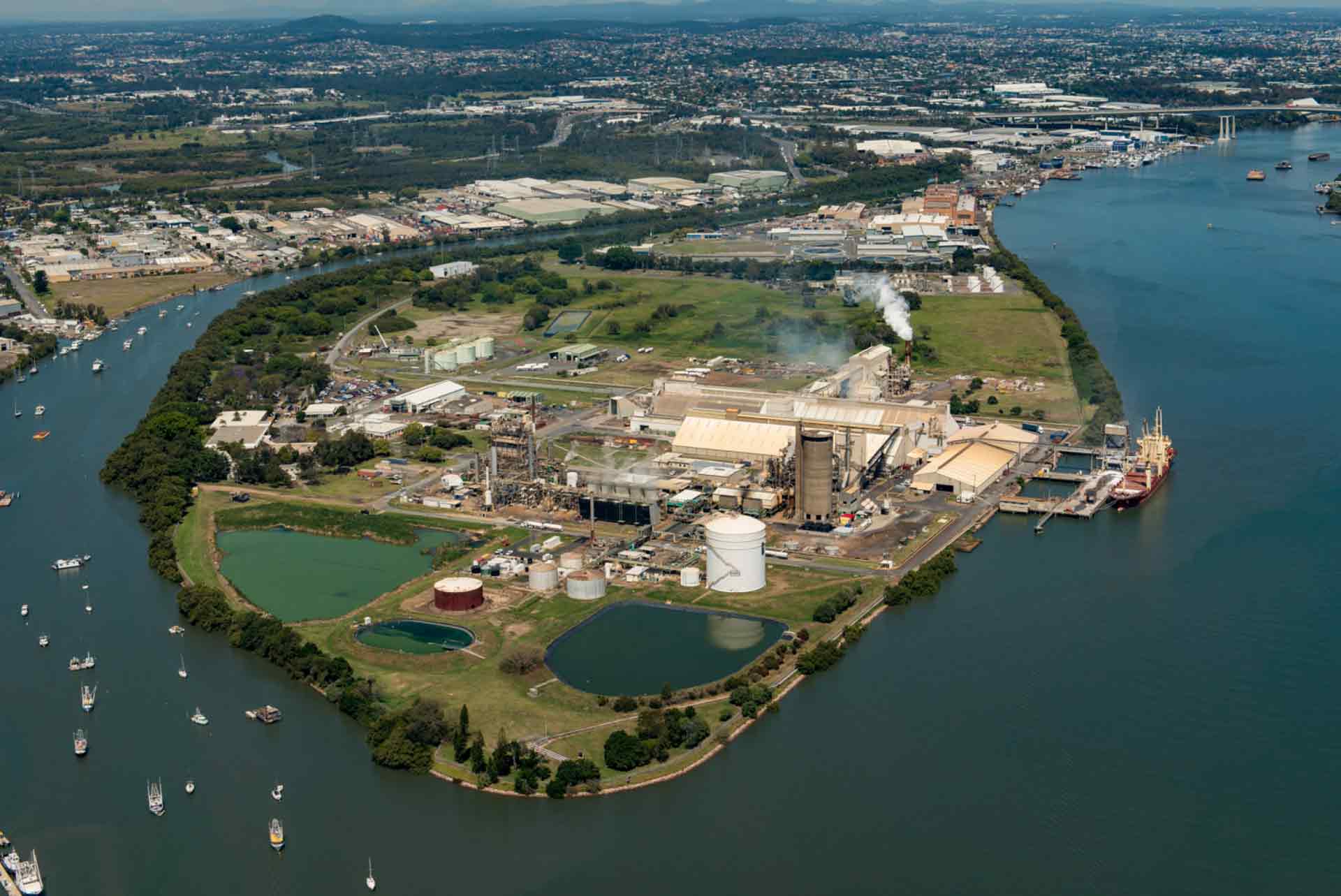Summary
Fortescue Future Industries and Incitec Fertilisers Operations are undertaking a joint front-end engineering and design (FEED) study for the development of a large-scale renewable hydrogen production facility to decarbonise the existing Gibson Island ammonia plant.
Need
The synthesis of ammonia requires large quantities of hydrogen and is currently the largest existing use of hydrogen in Australia and globally. However, most of this hydrogen is produced from natural gas-based steam reforming, making ammonia production a highly energy intensive process, producing about 500 million tonnes of carbon dioxide every year, which is around 1.8 per cent of global carbon dioxide emissions, similar in scale to the aviation industry.
The Gibson Island Renewable Ammonia Project FEED Study aims to demonstrate a pathway to decarbonise ammonia production by converting existing ammonia facilities to use renewable hydrogen produced through the electrolysis of water. At the same time, the project represents the first step in establishing large-scale renewable hydrogen and ammonia production facilities in Australia, paving the way for future export opportunities.
Action
Fortescue Future Industries will work with Incitec Fertilisers Operations Pty Ltd to conduct a FEED study for the deployment of 500 MW of electrolysis capacity, capable of producing up to 70,000 tonnes per annum of renewable hydrogen and conversion of IPL’s existing Gibson Island ammonia synthesis plant to utilise 100% renewable hydrogen for the production and offtake of 400,000 tonnes per annum of renewable ammonia.
The project will provide valuable learnings around the current cost of producing renewable hydrogen at large-scale and the infrastructure adaptations required to facilitate the export of renewable ammonia. This understanding is critical to scaling up hydrogen production in Australia and developing both the domestic and export industry for clean hydrogen in line with Australia’s National Hydrogen Strategy.
Outcome
The project will generate key learnings including:
- the development of benchmarks for the economics of large-scale renewable hydrogen and ammonia production in Australia
- improving understanding of the technical and commercial feasibility of large-scale electrolyser deployments, providing knowledge that will allow for the project or other future projects to be de-risked and deployed
- improving understanding of the feasibility of converting existing ammonia production facilities to utilise renewable hydrogen.




